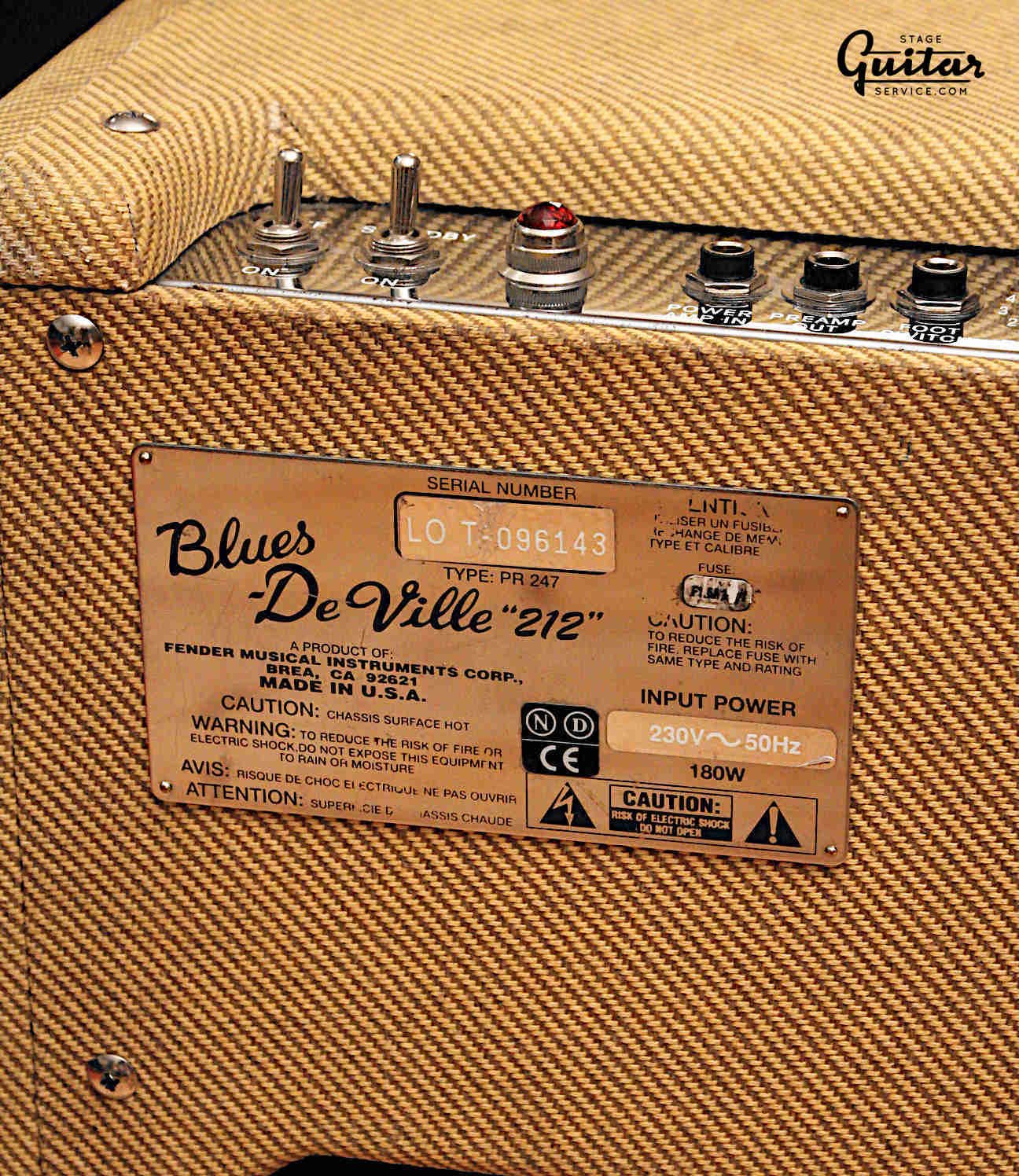

The Blues Junior's lower values equal less bass and mids. The higher a cap's value the more low end and mids pass through the caps. The Blues Junior uses smaller value coupling caps than vintage Fenders throughout out the amp. The downside is that you have to turn the amps up to get breakup. Vintage Fender amps did not have master volume controls and were more dynamic, touch sensitive, and open sounding as a result.

The design in a Blues Junior is particularly lossy and a different design would have sounded better. The master volume appeals to buyers but not to the ears. It you want to kill the tone of a low gain amp all you need is a master volume. However, the difference in sound quality between a tube and solid-state reverb is very noticeable.

Again an amp with solid state reverb is much cheaper to produce. The Blues Junior's reverb is solid state and does not sound as lush or warm like a tube reverb or even as nice as a high quality digital reverb. Solid State Reverb: Vintage Fenders with reverb used tube reverbs. Some players prefer one type of rectifier to the other. The designer could have added sag into the circuit without the tube rectifier but did not in this case. Again it is cheaper to produce a power transformer for solid-state rectification and not have the cost of a tube. The Blues Junior has a solid state rectifier which is generally brighter with a tighter bottom end. Solid State Rectifier: with the exception of the Twin Reverb and a few Brownface designs vintage Fender amps used tube rectifiers which gave them a softer bottom end and singing quality to the sustain. It should be noted that it is possible to build very nice amps with PCBs but most major companies do not take the steps necessary to do so. Many other foreign brands sound and work better. Inexplicably Fender uses them in almost all their amps.

Illinois Capacitors (the big grey ones) are know throughout the boutique amp world as being the worst brand of caps out there. The filter caps are poor quality causing problems with the amp turned up. Components are smaller and of lower quality in some cases (some parts are just fine). The layout is not as ideal since components must be mounted to suit the PCB rather than the best layout for the circuit. PCB Board rather than hand wired: keeps the labor cost low, makes the amp hard to repair and the PCB board causes layout difficulties and tonal loss due to stray capacitance since all components are on one physical plain. One thing to note is that there are some Blues Jrs with thinner baffles but the thicker baffle is more common. Whether you like the "floating baffle" or fixed baffle sound is really a matter of taste. The downside is that the speaker is less efficient in a "floating baffle design". This thickness makes the baffle act as an extension of the speaker adding to the coloration to the sound. Tweed Fenders used 3/8 plywood for the baffle. The downside is that finger joints are laborious adding to the cost.ġ" Thick Particle Board Baffle on some models does not allow for vibration like those found in other "floating baffle" designs. Particle board at best is neutral in this regard.įinger Joints are much stronger than the Dado joints found in the Blue Junior. Particle Board or MDF Cabinet rather than solid Pine: absorbs sound and is much heavier (one special edition uses plywood and sometimes the baffle is plywood). By lowering the labor and material costs Fender keeps the price low and the profits high. The basic construction of the Blues Junior is very different from vintage Fender amps. The Blues Junior is it's own design-it's own thing.īasic Construction Differences from Vintage Fenders: While it is dressed that way it is nothing like a Tweed. So why is that? What about the Blues Junior is so different from the vintage 50's and 60's Fender designs that are so coveted and that so many of my amps are inspired by? In this article I will delve into the differences in construction and circuit design and how they compare to vintage Fenders.įirst a Common Misconception about the Blues Junior:Ī common misconception about the Blues Junior is that the Blues Junior basically a Tweed type amp. The Blues Junior is a good choice for someone trying to get their first tube amp but it not a professional's amp by any stretch. A Junior sounds okay but if I could not build amps that sound better than a Blues Junior I would be doing something else. It is fair question these days. The Blues Junior has become such a common commodity that holds a place as a moderately priced amp that everyone has tried. In the course of selling and building amps I often get asked how my amps will compare to Fender Blues Junior.


 0 kommentar(er)
0 kommentar(er)
